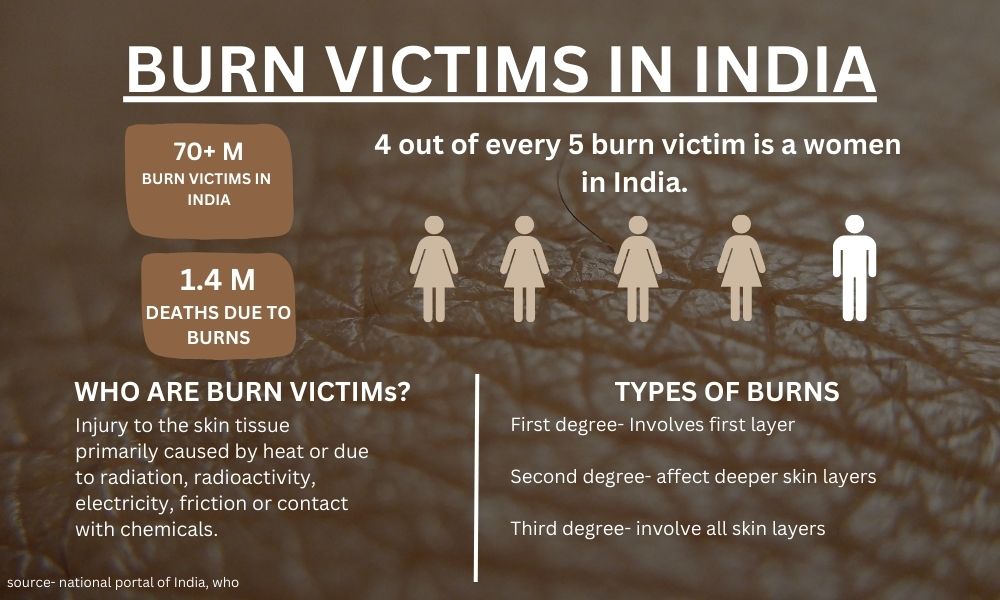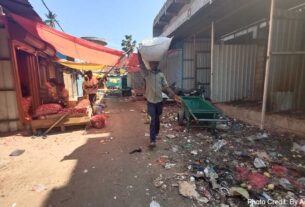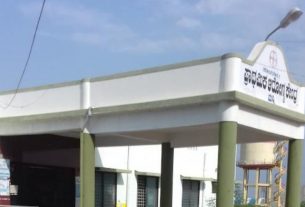Despite an increase at the bank, the only skin bank in Bengaluru is unable to meet the existing demands of burn patients.
Pragya Prasun who has been actively campaigning for skin banks for around a decade now recalls her own experience of needing skin donation at the time of her treatment. Being a burn victim, she said that getting donation at the right time of her surgery would have helped her. However, having access to various methods of treatment, she was able to use them. But this is not the case for majority of the burn victims, who she and her NGO Atijeevan have been fighting for.
Pragya, founder of the Atijeevan Foundation, is not able to help the burn patients with skin donations as the donations received at the only skin bank of Bengaluru are not enough to meet the growing demands of burn patients. At present, the bank has around 6000 sq. cm of skin.
“All the burn victims who come to us have not been able to receive skin donations,” said Pragya . Running a non-governmental organization (NGO) for burn victims, she said that skin donations would be able to revive the lives of severely burnt patients.
Inaugurated in 2016, the Rotary Ashirvad BMCRI Skin Bank has been able to help 151 patients and has received 178 donations in total from 2016 to 2022. The donations were reduced to a single digit, nine when COVID hit the country back in 2020. But the numbers again increased in 2022 as the bank received 40 donations last year This number is similar to the donations received by the bank back in 2017. “But this amount is still not enough to meet the demands of the victims,” said Dr. Ramesha KT, who is the head of Plastic Surgery at Victoria Hospital.
Nagraj BN, in charge of the only skin bank in Bengaluru located in Victoria Hospital, said “Just like any other donations, there is a need for awareness about skin donations so that we are able to meet the demands of the burn patients.” He added that the lack of awareness about skin donation was the biggest hurdle for them.

“The amount of skin that a burn patient need is determined by the plastic surgeon of the victim,” said Nagraj. He added that some patients required more harvested skin than others and it completely depended on the burn the patient was suffering from.
Dr. Ramesha KT said, “We treat around 70 to 80 burn patients every day at Victoria Hospital.” The burn patients who receive skin donations are also provided with rehabilitation services such as social rehabilitation and legal aid as well.
“The main issue is that many burn patients belong to the underprivileged category and are not able to avail any of the services when they suffer from burns, said Pragya. She talked about the lack of infrastructure available for burn patients at government hospitals. “Visiting a private hospital is not possible as they would not be able to pay for the treatment,” added Pragya.
At present, there are no specific policies aimed at the welfare of burn victims. Apart from the compensation received by the acid attack victims, the burn victims who are not acid attack victims find it difficult to get help. Pragya added, “Compensation that is promised to the acid attack victims comes slowly and many have still not received their dues.”
A policy to help the burn victims were promised by the government of Karnataka in 2017; however, the policy has still not been implemented. Pragya, who has been actively voicing the concerns of the victims talked about the lack of help from the government. “I have submitted various RTIs and reports, but nothing much has happened,” said Pragya. She will be submitting another set of reports to the Department of Women and Child Welfare on Jan. 18, 2022.
Ramesha KT, who was also involved in the policy-making said, it was under consideration and would be able to help the burn victims once it would be laid out.
When it comes to policy for burn victims, Pragya said that there is a need to include burn patients under the Rights of Persons with Disabilities (RPwD). “In case of disfigurement, it leads to issues in mobility for the victims. When they would be under RPwD, they would be able to get few advantages because of the Act,” said Pragya. She added, “Job placement is another element that should be included in the policy for the victims or else they would be forced to live inside the four walls of their homes, as it has been the case for the majority of the victims.”








